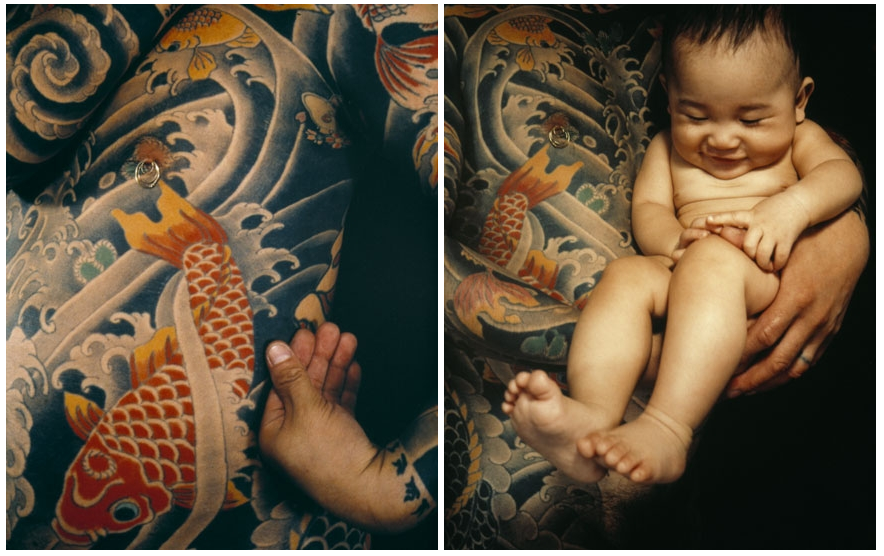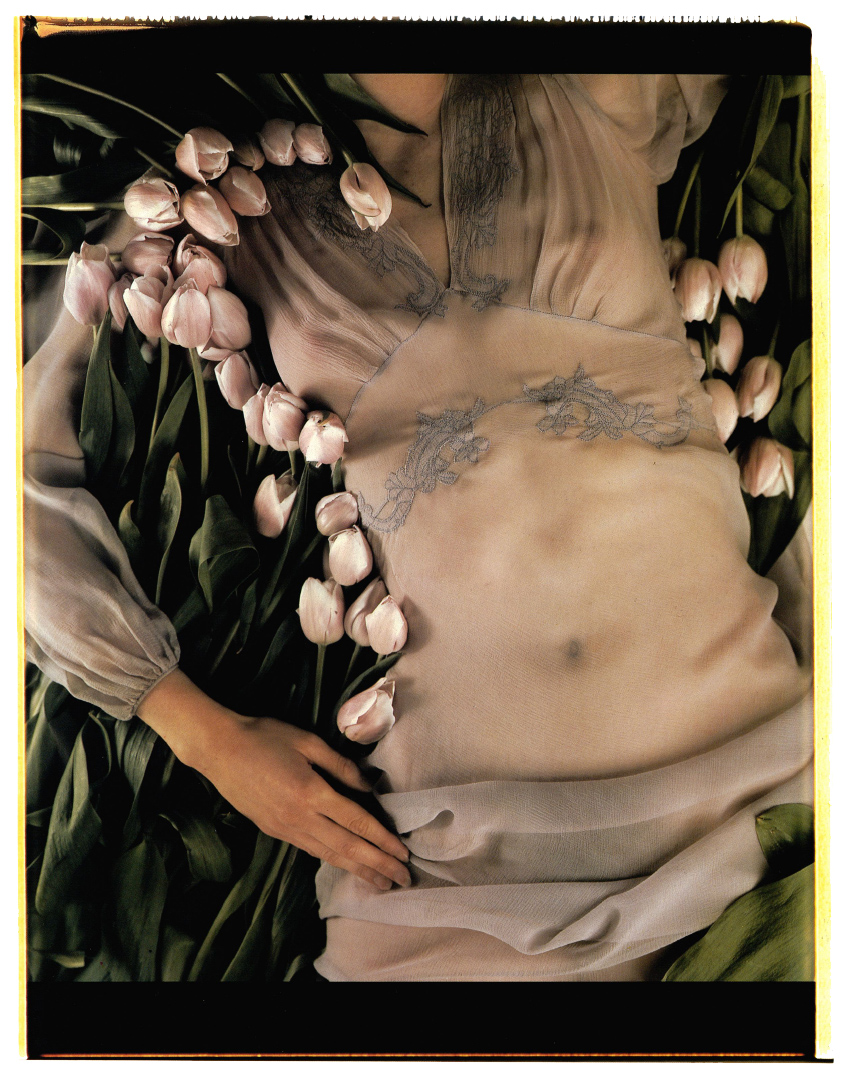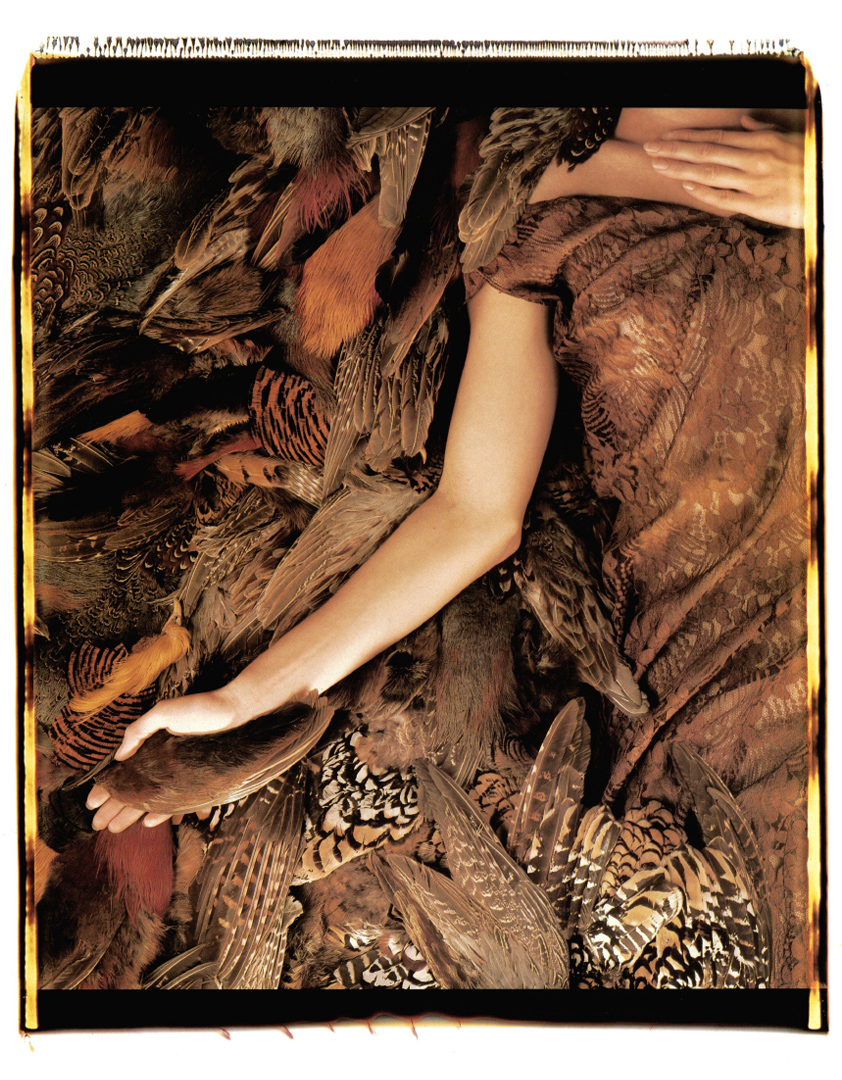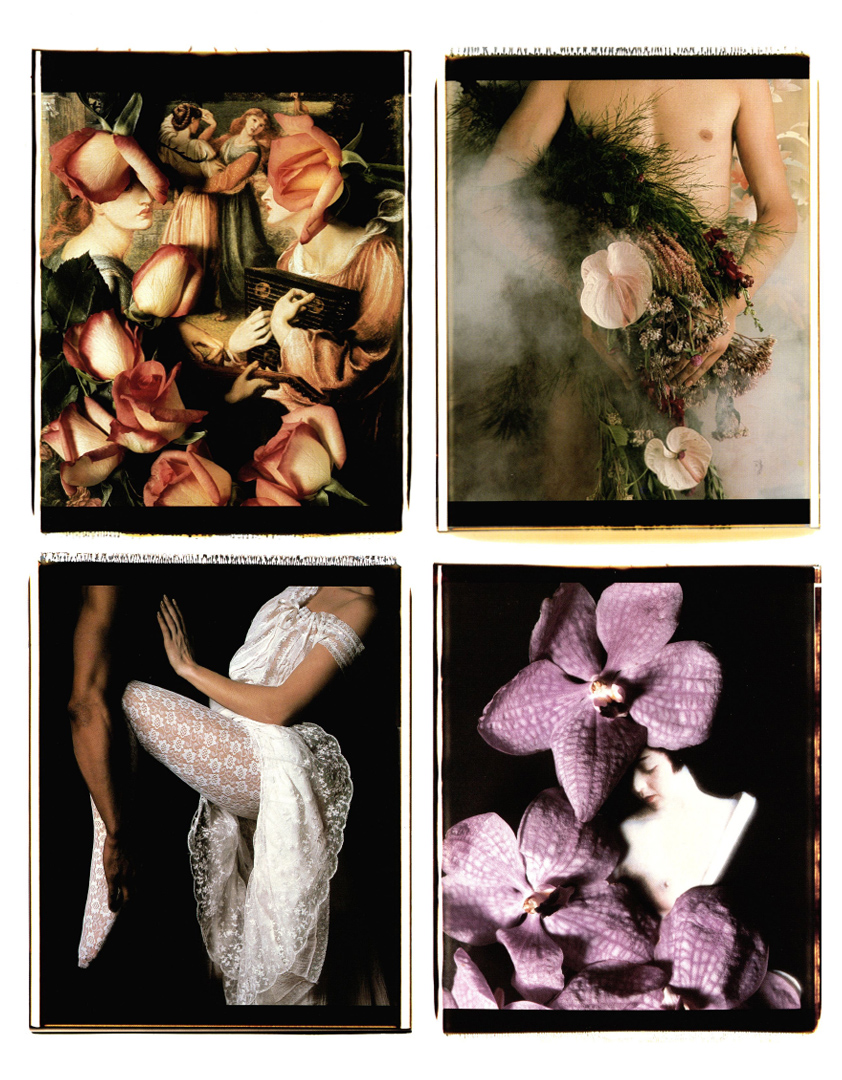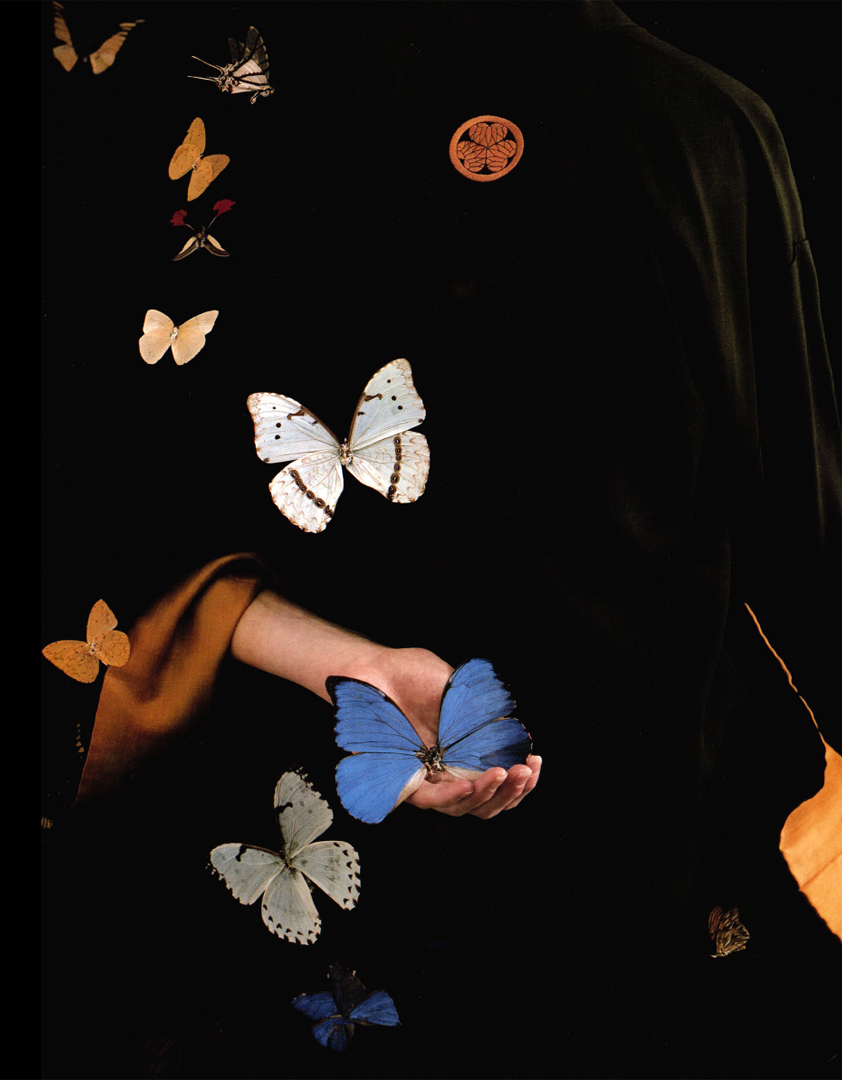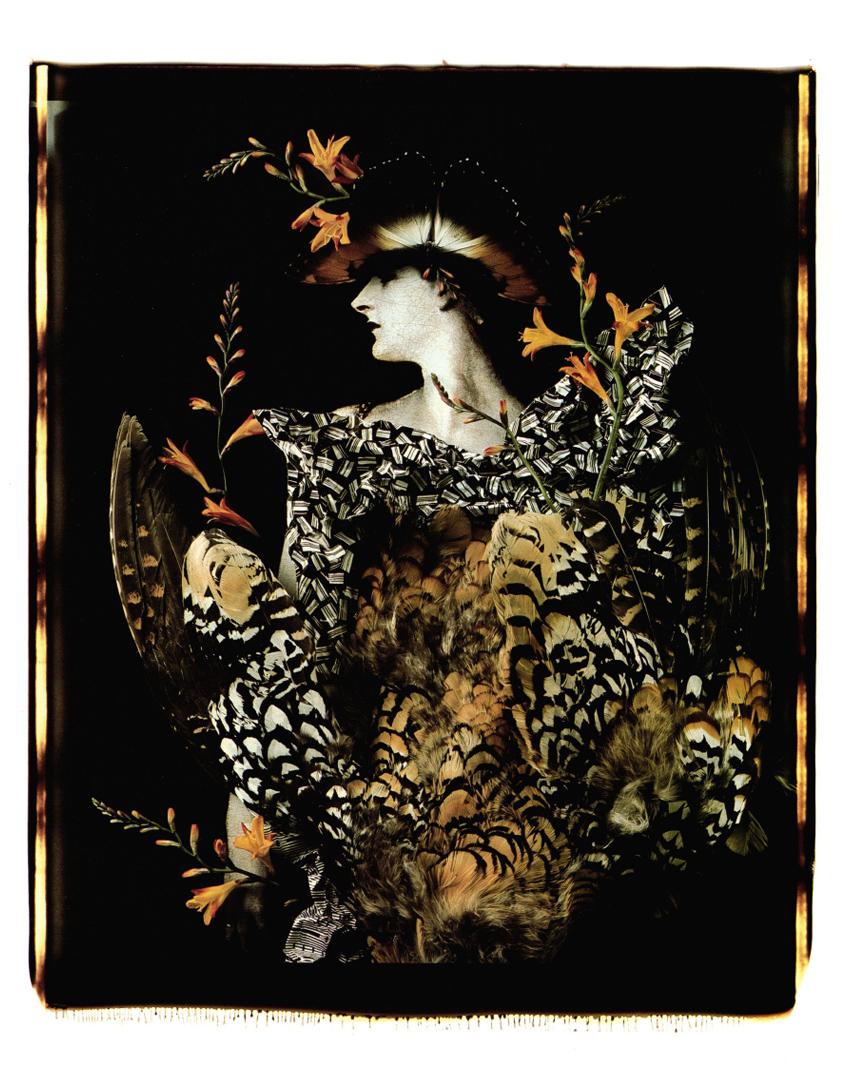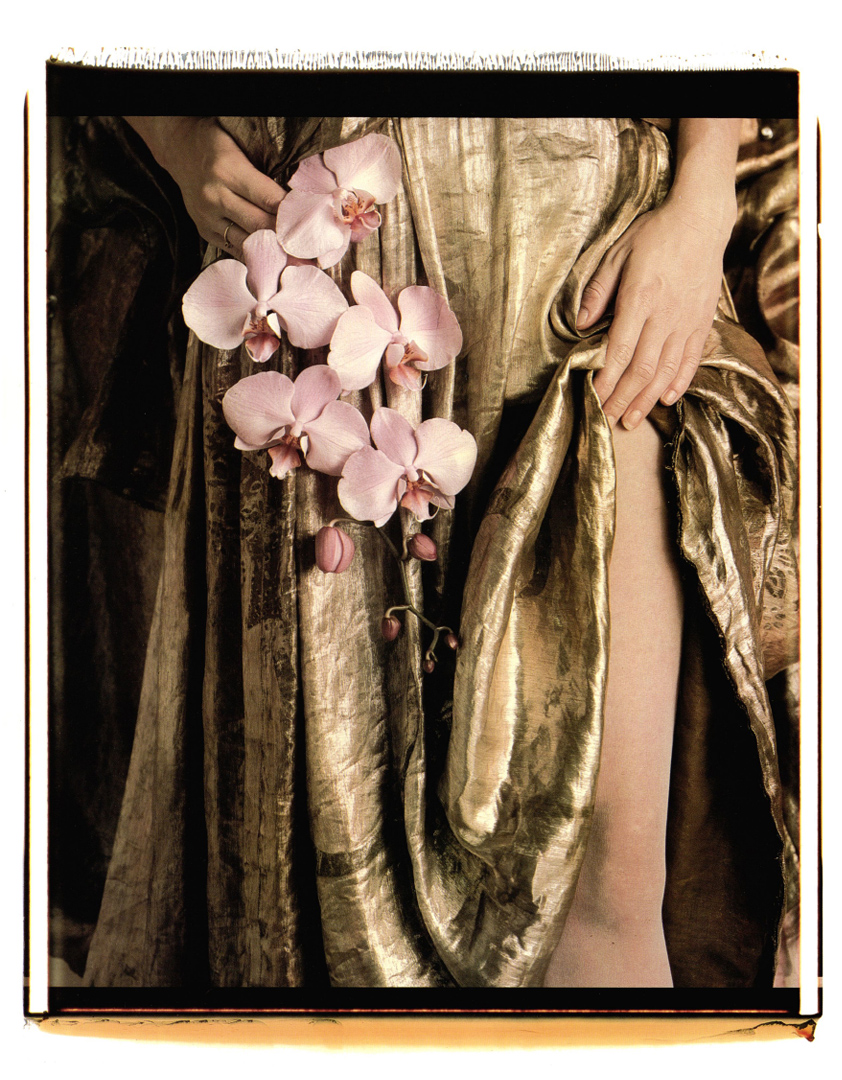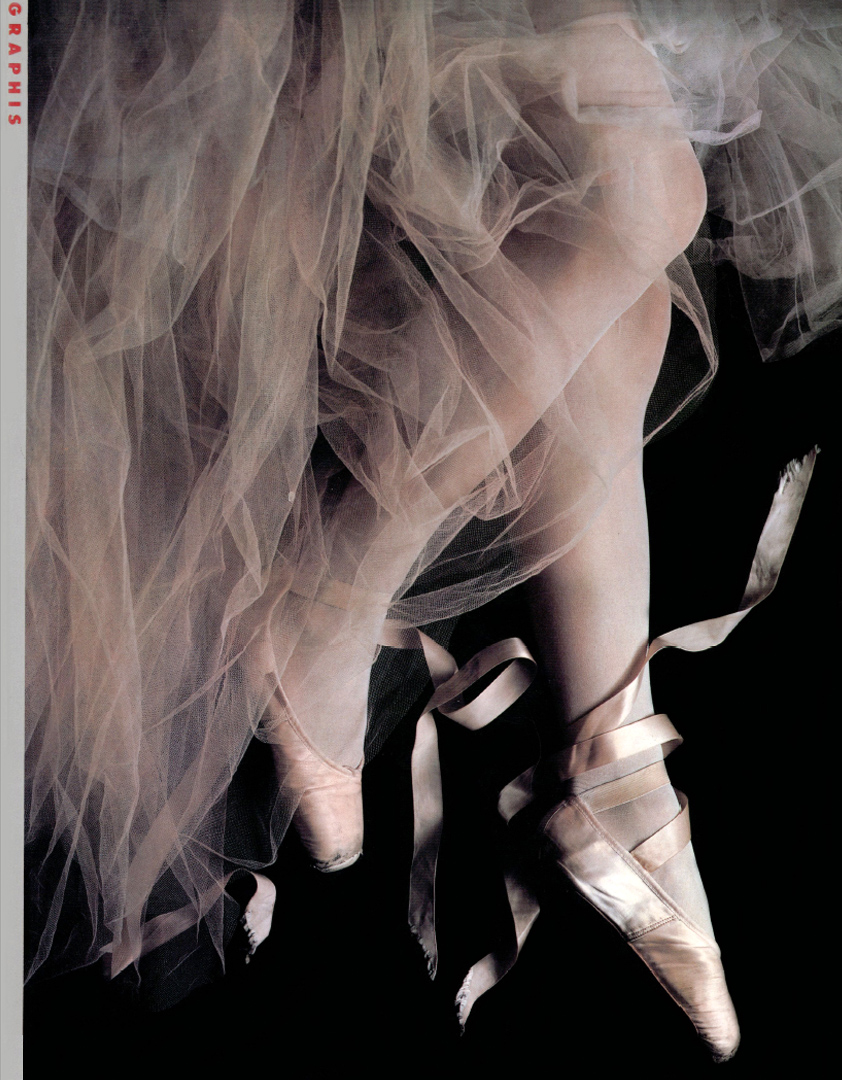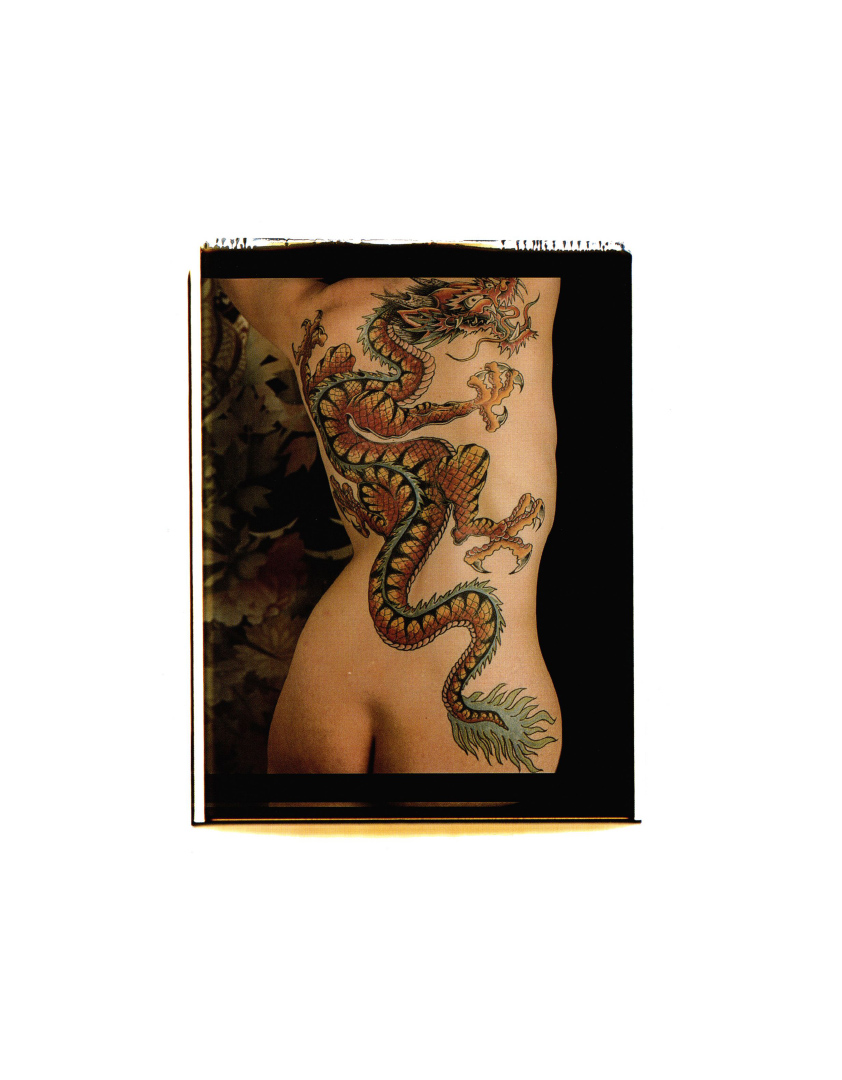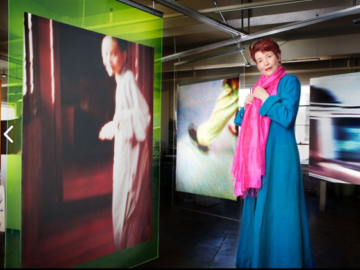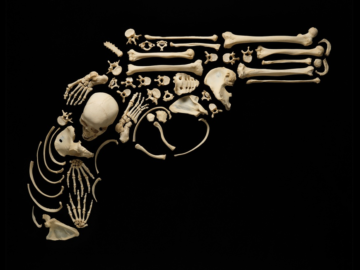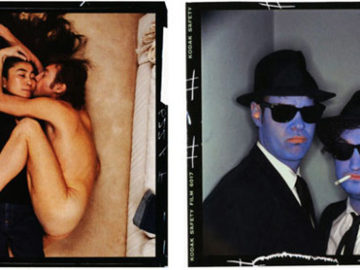Sandi Fellman to Photographers: Devour the World!
Perhaps most noted for her photos of Japanese Irezumi, a traditional full-body tattoo movement re-popularized by the gangland Yakuza, art and fashion photographer Sandi Fellman‘s career has spanned five decades and taken on many iconic, influential (and highly copied) forms. Back in 1988, Graphis 253 featured her pre-digital, constructed polaroid still lifes in an article titled “Sandi Fellman: Beyond the Surface” by Amy M. Schiffman, from which the following images and text have been pulled.
Known for creating her own brand of contemporary still life — exquisite compositions built of flowers, feathers, lace, and ethereal body parts, photographed from above with a 20 x 24 Polaroid camera — the images have a rich, alluring surface, and are full of the lavish colors that only Polaroid emulsion can render. They also exude a heady sensuality, but they’re not sexy so much as suggestive, in a very intellectual way. They suggest the existence of scenarios, of stories only partly told. Far from being prurient, they seem to celebrate the many-layeredness of life.
Although she shoots most of her commercial assignments on medium-format, color-transparency film, Polaroid film is ideally suited to her personal work. Fellman is attracted not only to its brilliant palette, but also to the layered nature of the emulsion, which has “relief, like Japanese lacquer painting”. She admits that there is a certain ease in working with the 20 x 24 camera, saying, “I can’t imagine having to fuss with little tiny contact sheets…a darkroom… or having to work with a printer!”
Fellman is using the Polaroid camera and studio to add to an ongoing body of work that is different from, but clearly related to, both the tattoo series and her earlier assemblages, incorporating flowers, fruits, butterflies, and occasional fragments of great paintings by the likes of Balthus, Degas, and Rossetti.
In another photographer’s hands this act of borrowing might be called appropriation. However, in Fellman’s work, as photographer John Reuter of Polaroid succinctly put it, “it’s not appropriation, it’s appreciation”. Fellman claims that these images were born, at least in part, in reaction to the discipline, the “do’s and don’ts” of fashion photography. The pictures have a spontaneity, and even a subtle humor, in their juxtaposition of the simple and the complex, the natural and the man-made, the found and the created.
In Fellman’s words, “they are a little bit like automatic writing — instinctual creations that simply happen rather than being planned, but they express deep inner truths. They also tell an important truth about the woman who created them: that while she is a talented, committed, and accomplished photographer, she does not limit her sources of inspiration to photography.”
Fellman lets literature, painting, and music affect her work, and sometimes even gives the source on-page photographic credit. In fact, Fellman believes that photographers, who tend to “exist in their little niches” need to be more open to and more involved with the other arts. She wishes that her fellow photographers could be more like some contemporary painters who “devour the world”.
As if to prove her ability to create outside the boundaries of the photographic medium, Fellman recently designed a set of costumes for the Melissa Fenley Dance Company. “The first time the curtain went up, I was afraid people would laugh.” But they did not laugh, not in the slightest. Clearly, Fellman’s eye for costume design is informed by her other visual concerns, such as fashion and ornament, which, as she puts it, “are all connected”.
Her popular tattoo series reflects that ornamental concern, too. In 1985 Fellman visited Japan to work on a project that was personal in the extreme. She had learned of a group of Japanese called Irezumi who covered their bodies with exquisite traditional tattoos. She wanted to penetrate the slightly sinister world of these eccentric characters and to learn more about them. These living works of art appealed to her interest in what she calls “the exotic accoutrements of physical appearance”.
Happily, Fellman’s breadth of interest has not lead her to downplay the importance of photographers who achieve success in some of the more elitist precincts of the art world. In fact, she likes to quote one of her few photographic mentors, Cavellier Ketchum, her professor at the University of Wisconsin. “He used to say ‘photography is a way of life’ and now I know he’s right. I’m so lucky. I get up in the morning and all I have to do is think about making pictures.”
If this work has inspired you, think about submitting your own to our current Photography Annual 2014 competition which features the most compelling and influential photography of the year. Prizes consist of gold and platinum awards, with winning entries published in the Photography Annual 2014. To submit click here. But don’t wait! The final deadline is coming up fast!
To check out more work by Sandi, click here.
A low resolution pdf of this article is available free to Graphis Members. Purchase a Professional Membership here. A high resolution digital copy of Graphis 253 is available for iPads and iPhones from the Graphis App found here: Graphis on iTunes.

